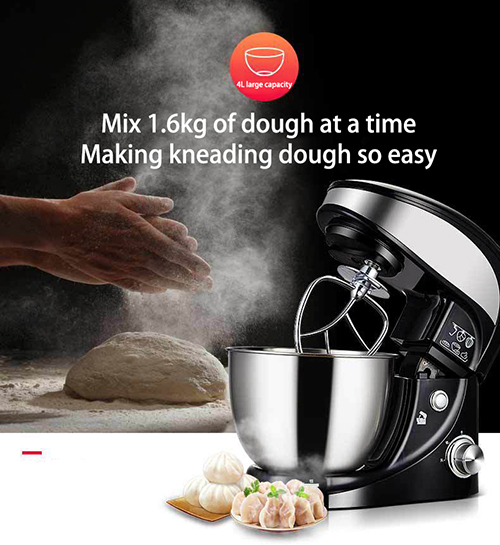Whether you’re an avid baker or a casual cook, having the right tools in your kitchen can make a difference. When it comes to baking, dough machines have become a popular choice among bakers around the world. But is this baking tool really non-stick? In this blog, we’ll explore the capabilities of a dough maker and determine if it lives up to its non-stick reputation.
Learn about the dough mixer:
Dough mixer, also known as dough hook or bread hook, is an appliance specially designed for kneading dough. It is often used in bread making recipes where the dough needs to be thoroughly mixed and shaped. This dough maker consists of a metal hook attachment that can be attached to a stand mixer or hand mixer for efficient and convenient dough preparation.
Is the dough mixer non-stick?
To know if a dough maker is non-stick, it’s crucial to realize that their primary function is kneading, not preventing sticking. Unlike traditional non-stick cookware, the surface of the dough maker does not have any special coating. As a result, when using a dough maker, the dough will often stick to the hook or the side of the mixing bowl.
The benefits of the dough mixer:
While dough machines may not be non-stick in nature, they have several compelling advantages that make them a popular choice for bakers:
1. Efficient Dough Mixing: The main purpose of a dough machine is to facilitate the kneading process, allowing you to efficiently mix ingredients and form gluten lines. This produces a well-structured dough, which is essential for delicious bread and other baked goods.
2. Save time: The powerful and consistent mixing action of the mixer significantly reduces the time required for manual kneading. It allows you to achieve the desired dough consistency in minutes, saving you the effort and repetitive motion of hand kneading.
3. Versatility and Convenience: Dough makers come in a variety of sizes and designs to suit both home kitchens and commercial bakeries. Plus, they can be used to mix other heavy batters, such as pizza dough or cookie dough, without the hassle of manual mixing.
Tips for minimizing dough stickiness:
While using a dough maker doesn’t guarantee a non-stick experience, there are a number of techniques you can employ to minimize dough sticking to the hook or bowl:
1. Proper heating and lubrication: Let your ingredients, especially fats like butter or oil, come to room temperature before using the dough maker. Also, lightly grease the mixing bowl and dough maker hooks with oil or cooking spray to create a smoother surface for easier dough release.
2. Adjust the consistency of the dough: The viscosity of the dough will be affected by factors such as the ratio of flour to water. If the dough is too sticky, gradually add small amounts of flour until it becomes easier to handle. But be careful not to add too much flour as it will make the dough tough and affect the final texture.
While dough makers may not have the same nonstick coating as traditional cookware, their utility in baking cannot be underestimated. These tools are primarily used for efficient dough kneading and mixing, helping bakers achieve consistent results. By employing some helpful tips and tricks, you can minimize dough sticking and ensure a smoother baking experience. So go ahead and embrace the convenience and benefits of a dough maker, knowing that the occasional sticking is a small price to pay for delicious homemade bread!
Post time: Jul-26-2023

